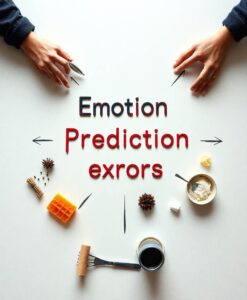For scientists and engineers trying to improve reinforcement-learning models, the study points toward specific features of emotion worth modeling. Moment-to-moment shifts in subjective feeling, the timing of emotional responses, and how emotion influences action selection are likely to alter learning dynamics. Neural evidence that these components produce distinct prediction-error signals suggests we can represent them modularly in algorithms rather than folding emotion into a single value term.

Thinking about emotion in computational terms opens practical pathways for inclusive design and human-centered AI. If models incorporate emotional ingredients that mirror human prediction errors, they may predict behavior across a wider range of people and contexts and support systems that respond more sensitively to human needs. Click through to see which neural signatures map to which ingredients, and how that mapping could reshape our ideas about growth, adaptability, and the role of feeling in intelligent systems.
Does including emotions improve reinforcement-learning models? A recent EEG study by Heffner and colleagues presents separate neural signatures for reward and emotion prediction errors. This advance invites questions about, and even holds clues to, which ingredients of emotion and prediction errors most improve reinforcement-learning models.

